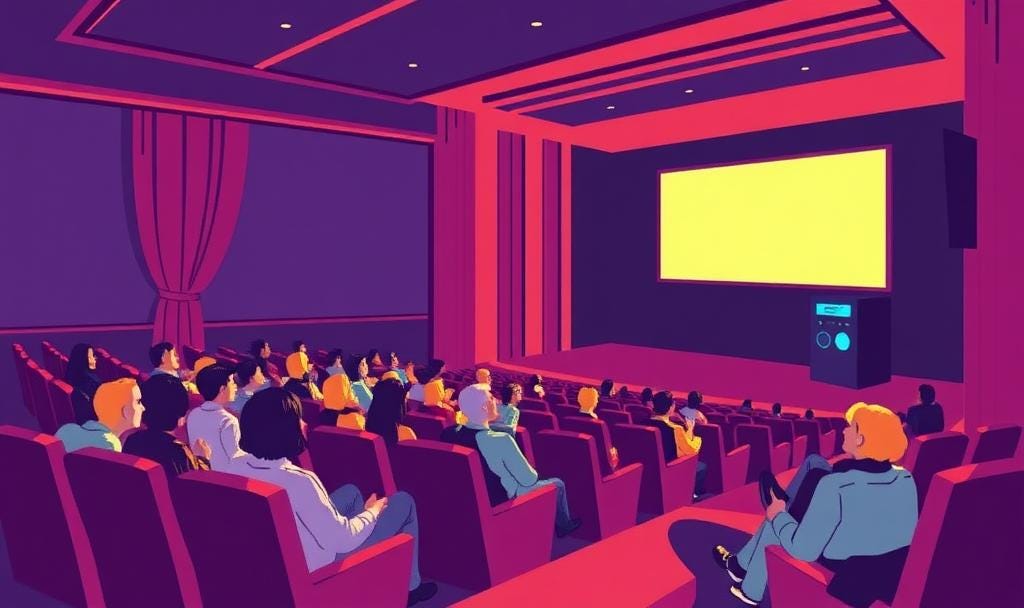This is part of my Pop Music in the ‘80s series.
Music in Film and Television
As MTV reshaped the music industry, its influence didn’t stop at pop charts and radio stations—it extended directly into Hollywood. By the mid-1980s, film and television producers realized that hit songs not only complemented their projects; they could drive ticket sales, boost ratings, and even define entire eras of entertainment. What followed was a golden age of movie soundtracks, where music wasn’t just a background element—it was a central character.
MTV Changes Everything
The rise of music videos in the early ‘80s taught American audiences to expect visuals to accompany their favorite songs. As a result, Hollywood quickly realized that film and TV soundtracks had the potential to be marketing goldmines. Leveraging MTV’s immense promotional power, studios knew that polished visuals tied to a movie could propel both the film and the soundtrack album to massive success. In typical big-business fashion, producers sought to replicate the unexpected yet culture-defining success of Saturday Night Fever, but they tried to do it in a deliberate way.
The Era of Blockbuster Soundtracks
Few films exemplified this shift better than Flashdance (1983). Featuring hit songs like “Flashdance…What a Feeling” by Irene Cara and “Maniac” by Michael Sembello, the movie’s soundtrack was just as essential to its success as its visuals. The same could be said for Footloose (1984), where Kenny Loggins’ title track became an anthem of the decade. And then there was Top Gun (1986), which solidified this trend with Berlin’s “Take My Breath Away” and Loggins’ “Danger Zone,” both of which became inseparable from the film’s legacy.
Perhaps the most significant example of a soundtrack-driven film was Purple Rain (1984). Prince’s semi-autobiographical movie not only catapulted him into superstardom but also delivered one of the most successful soundtracks of all time, featuring timeless hits like “When Doves Cry” and “Let’s Go Crazy.” Both songs would go on to reach #1 on the Hot 100. Unlike other soundtracks, Purple Rain was more than a collection of songs—the soundtrack was an integral part of the film’s narrative, proving that music could be both commercially and artistically vital to cinema, even without being Broadway-style musicals.
Music Videos as Movie Marketing
Hollywood quickly realized that music videos could serve as free advertisements for their films. Rather than traditional trailers, studios used MTV to showcase movie-related music videos, sometimes featuring exclusive footage from the films themselves. This was the case with Ray Parker Jr.’s “Ghostbusters” (1984), where clips from the movie were interwoven with the song’s playful, supernatural-themed video. Similarly, Huey Lewis and the News’ “The Power of Love” not only became a chart-topping hit but also helped cement Back to the Future (1985) in pop culture history.
TV Embraces Pop
It wasn’t just film that benefited from this shift—television began incorporating pop music in ways never seen before. Shows like Miami Vice built entire episodes around contemporary hits, blending action with an MTV-inspired aesthetic. Jan Hammer’s electronic score became iconic (even reaching #1 on the album chart for 11 combined weeks in 1985-1986), while pop songs from artists like Phil Collins and Glenn Frey gave the series a cinematic feel that set it apart from other TV dramas. Meanwhile, shows set in the recent past like The Wonder Years used classic rock tracks to evoke nostalgia, further reinforcing the emotional power of soundtracks.
This nostalgic appeal wasn’t limited to television alone. The 1980s saw a noticeable resurgence of interest in legacy artists, driven in part by the transition from vinyl and cassette to compact discs. The CD format offered improved sound quality and longevity, making greatest hits collections and reissues of classic albums more desirable than ever. This trend was reflected in Hollywood’s increasing use of older hits in film soundtracks, exposing a new generation to music from previous decades. Films like Stand by Me (1986) and Dirty Dancing (1987) capitalized on this nostalgia, reviving interest in ‘50s and ‘60s rock and soul hits, while TV commercials and sitcoms leaned heavily into familiar classics to create emotional resonance with audiences.
The Crossover Effect
As the connection between music and visual media strengthened, artists and actors increasingly crossed between industries. Prince and Madonna successfully transitioned from music stars to movie leads, with varying degrees of critical success but undeniable commercial impact. David Bowie balanced both careers, starring in films like Labyrinth (1986) while continuing to release chart-topping albums. On the flip side, actors like Don Johnson and Eddie Murphy attempted music careers, leveraging their Hollywood fame to launch albums (though with mixed results).
The Road to Mega-Sales
By the late ‘80s, the success of movie soundtracks and the growing nostalgia for past musical eras laid the groundwork for the record industry’s shift toward mega-selling albums and strategic marketing. Labels recognized that a hit soundtrack could push an artist’s career to new heights while simultaneously driving album sales. The format wars between vinyl, cassette, and CD further intensified these efforts, as record companies sought to capitalize on the demand for high-fidelity, reissued music.
This realization would play a pivotal role in the coming years, as multi-platinum albums and high-budget marketing campaigns became the industry standard. As we move forward, the next stage of the music industry’s evolution—the era of mega-sales, major label strategies, and the battle over music formats—will reveal how these early innovations set the stage for an even bigger commercial explosion. The impact of MTV, Hollywood, and the soundtrack craze was only the beginning of a music industry boom that would define the late ‘80s and future decades.

